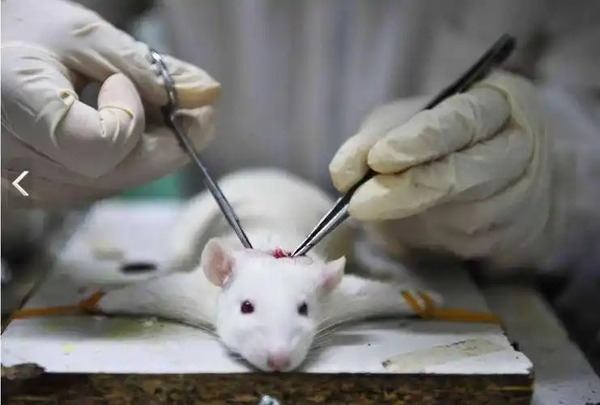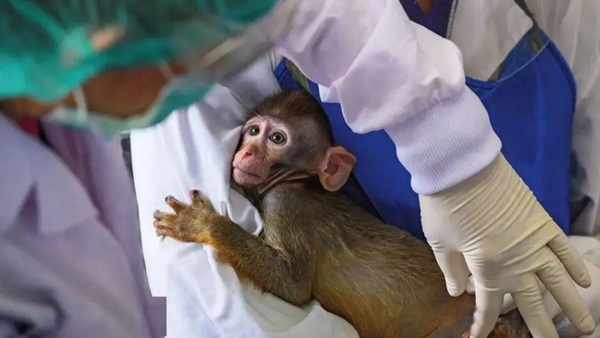Animal testing has long been a subject of ethical debate, with concerns centered around the treatment of animals used in scientific experiments. A pressing question often asked is: how many animals die from animal testing each year? While precise global figures are challenging to pinpoint due to varying regulations and transparency across different countries, estimates suggest that millions of animals suffer and die annually in laboratories. Understanding the scale of this practice requires a closer look at the numbers, the types of animals involved, and the regions where testing is most prevalent.

Worldwide, it is estimated that more than 115 million animals are used in scientific experiments each year, though this number is likely conservative. This figure includes a wide range of species such as mice, rats, rabbits, guinea pigs, dogs, cats, monkeys, and birds. The majority of these animals are used in biomedical research, pharmaceutical development, toxicology tests, and for educational purposes.
While not all animals used in experiments die as a direct result of the testing, many are euthanized afterward, particularly if they are deemed no longer useful for further study. Additionally, some animals die during testing due to the procedures themselves, which may involve exposure to harmful chemicals, surgery, or infection with diseases.
The use of animals in experiments varies significantly from one region to another. Below is a closer look at the areas where animal testing is most concentrated:
The United States is one of the largest users of animals in scientific research. Each year, over 20 million animals are used in laboratories across the country. The US Department of Agriculture (USDA) reports on animals covered by the Animal Welfare Act (AWA), which includes species like dogs, cats, rabbits, and non-human primates. However, rats, mice, and birds, which make up the majority of animals used, are not covered by the AWA, so their exact numbers remain unreported. Estimates suggest that the number of unreported animals could reach tens of millions annually.
In the European Union (EU), regulations are stricter, and there is more transparency regarding animal use in research. According to the latest data from the European Commission, about 10-12 million animals are used in experiments annually across the EU. However, the use of animals in cosmetic testing has been banned in the EU since 2013, so these animals are mainly used for medical and scientific research. Countries like Germany, France, and the United Kingdom are the largest contributors to this figure.
China has seen a significant rise in animal testing over the past few decades, largely due to its growing pharmaceutical industry. Estimates indicate that 20 million or more animals are used annually in scientific experiments across China. Unlike the EU, China still requires animal testing for many cosmetic products, contributing to the high number of animals used in such research.
Japan also ranks among the top countries in animal testing, using approximately 5-10 million animals each year. Japan’s laws on animal welfare in scientific research are considered less stringent than in Europe, contributing to the high volume of animals used in both medical and non-medical testing.
In Canada, it is estimated that around 3-4 million animals are used in experiments each year. Australia has similar numbers, with reports suggesting around 6-7 million animals are used annually, a figure that includes animals used in research, teaching, and environmental studies.
While mice and rats make up the majority of animals used in testing worldwide, other species are also heavily impacted. Below are some of the most commonly tested animals:
Rats and Mice: These small rodents make up 90% or more of animals used in experiments globally.
Rabbits: Frequently used in toxicology tests, such as those for skin and eye irritation.
Non-Human Primates (Monkeys and Apes): Used in studies related to brain research and vaccine testing, especially for diseases like COVID-19.
Dogs and Cats: Dogs, particularly beagles, are often used in pharmaceutical testing, while cats are primarily used in neurological research.
Fish: Increasingly used for genetic and environmental research, with millions used annually.
Some regions have made strides in reducing animal testing and introducing alternatives:
European Union: As mentioned, the EU has banned animal testing for cosmetics, and member states are required to actively seek alternatives to animal use in research.
India: In 2014, India became the first Asian country to ban cosmetic testing on animals.
South Korea: South Korea has also implemented a ban on cosmetic animal testing for products sold in the country, with similar laws in progress.

While millions of animals continue to die in laboratories each year, there is a growing movement toward reducing and replacing animal testing through alternative methods. Technological advancements such as in vitro testing, computer modeling, and organ-on-a-chip devices are gaining traction, offering hope that the number of animals used in experiments will decrease in the future.
However, achieving this goal will require stronger regulations, increased funding for alternative research, and greater public awareness of the issue. By pushing for change, we can begin to phase out the need for animal suffering in the name of science.
When animals die in laboratory experiments, or are euthanized following testing, the disposal of their bodies is typically managed in accordance with legal, ethical, and environmental regulations. The methods for handling the remains of these animals vary depending on the region, the type of animal, and the nature of the experiment. Here are the common practices for disposing of deceased lab animals:
Incineration is the most widely used method for disposing of dead laboratory animals. In this process, the animal carcasses are burned in a high-temperature furnace known as a crematory or incinerator. Incineration is considered a sanitary and environmentally safe method because it reduces the remains to sterile ash, which can then be disposed of in a landfill or used in other ways. This method also helps eliminate the risk of spreading infectious agents or harmful chemicals that may be present in the animals' bodies due to experimental treatments.
In many countries, including the United States and European Union, strict regulations govern incineration facilities to ensure that emissions and waste products do not harm the environment or public health.
Rendering is a process in which animal remains are processed into materials like fats and proteins, which can sometimes be used in industrial applications such as biofuels or pet food. However, animals used in research and testing are rarely rendered, especially if they have been exposed to toxic substances or infectious agents, since it poses a significant health risk.
In some cases, animals that have been deemed non-hazardous (i.e., not contaminated with dangerous chemicals, radioactive materials, or infectious diseases) may be disposed of in landfills. However, this method is less common in modern research institutions due to environmental and ethical concerns.
Proper burial or landfill disposal is typically done under strict regulation, ensuring that it is safe for the environment and that there is no risk of contaminating groundwater or surrounding areas.
In cases where laboratory animals have been exposed to harmful or infectious substances (e.g., during testing for diseases or toxicology), their bodies must often undergo decontamination before disposal. This could involve chemical treatments or autoclaving, where the carcasses are subjected to high pressure and steam to sterilize them. After decontamination, the remains are typically incinerated or buried following local regulations.
Composting of animal remains, though less common, can be used in some controlled settings, especially for smaller animals like rodents. This method involves breaking down the bodies using biological processes to produce nutrient-rich compost. However, composting is usually limited to animals that have not been exposed to hazardous substances, and it must be carefully managed to avoid public health or environmental risks.
If an experiment involves dangerous pathogens (like viruses, bacteria, or toxins), the remains of the animals are classified as biohazardous waste. Biohazardous carcasses are usually double-bagged, labeled, and stored in designated biohazard waste containers before being incinerated or treated with high-temperature sterilization.
Special permits and oversight are required to handle and dispose of biohazardous animal remains safely, to prevent contamination or accidental release of pathogens into the environment.
Different countries have various agencies and laws that regulate the disposal of laboratory animals. For example:
In the United States, the disposal of research animals is governed by the Animal Welfare Act (AWA) and regulations set by the Environmental Protection Agency (EPA) and Centers for Disease Control and Prevention (CDC), especially for biohazardous materials.
In the European Union, laboratories must adhere to the EU Directive 2010/63 on the protection of animals used for scientific purposes, which includes provisions for humane euthanasia and disposal.
Other countries like Canada, Australia, and Japan have their own similar frameworks governing the ethical disposal of lab animals.
The disposal of lab animals also involves ethical considerations, especially in institutions that practice the 3Rs Principle (Replacement, Reduction, and Refinement), which aims to minimize animal suffering and improve the welfare of animals used in research. Respecting the dignity of the animals, even after death, is a priority for many research facilities. For example, animals are often euthanized using methods deemed as humane by veterinary and research standards before their remains are disposed of.
The disposal of animals that die or are euthanized during laboratory experiments is a highly regulated process that prioritizes safety, sanitation, and, increasingly, ethical considerations. Incineration remains the most common and preferred method due to its ability to eliminate biological risks, but other methods like rendering, burial, and composting are sometimes used depending on the circumstances. Each region and institution must comply with strict guidelines to ensure that the remains of lab animals are handled in a way that minimizes risks to public health, the environment, and respects the dignity of the animals involved.
animal tags: Animal-Testing
We created this article in conjunction with AI technology, then made sure it was fact-checked and edited by a Animals Top editor.